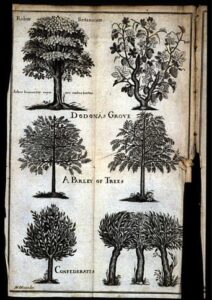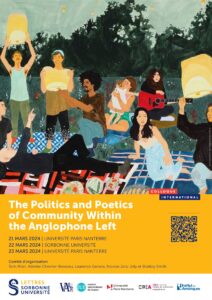PROJET ERC CHROMOTOPE –
Colour Matters : Exploring Colour and Chromatic Materialities in the Long Nineteenth Century (1798-1914)
6-8 December 2023
Trinity College, Oxford
Nous avons le plaisir de vous inviter à participer au Colloque Colour Matters : Exploring Colour and Chromatic Materialities in the Long Nineteenth Century (1798-1914), organisé dans le cadre du projet ERC Chromotope à Trinity College, Oxford.
Inscription gratuite pour assister en présentiel au colloque jusqu’au 18/11/2023. Tous les participants pourront profiter d’une visite privée de l’exposition Colour Revolution, Victorian Art, Fashion and Design à l’Ashmolean Museum. Vous en trouverez un nouveau compte-rendu ici paru dans Apollo il y a quelques jours. Un lien zoom sera également disponible sur le site de Chromotope pour ceux et celles qui préfèreraient suivre le colloque en ligne
Image credit: © Ashmolean Museum, University of Oxford
Presentation and Call for Papers:
When discussing colour, it is customary to say that the topic has long been shunned or marginalized in academic study, especially in the humanities. But the past two decades have seen the emergence of a new interdisciplinary field marked by the publication of a wealth of colour-focused studies and the organization of major conferences dedicated to the histories of polychrome practice in art, architecture or textile heritage. Building on Michel Pastoureau’s and John Gage’s pioneering work, these new perspectives on colour bring together the visual arts, chemistry, physics, archaeology, archaeometry, anthropology, social history, and even literature, to unveil hitherto neglected aspects of the culture of colour. No longer seen as superficial or secondary (Batchelor 2000), colour now evidently matters.
And yet, contrary to Pastoureau’s and Gage’s cultural histories, many of these works (Roque 2009, Eaton 2013, Doran 2013, Ribeyrol 2016, Durgan 2018, Kalba 2018, Gaskill 2018, Rossi 2019, Conquer 2019, Dootson 2023) focus on the long nineteenth century only. The period was indeed a crucial moment in the history of ‘modern’ colour as the industrial revolution turned into a ‘colour revolution’ (Blaszczyk 2012). This revolution was notably brought about by the invention of new synthetic pigments, dyes and colour technologies (such as chromolithography) which radically changed the perception and production of colours for all sections of society in Europe and beyond, as well as the status of colour itself (Loske 2021). Thanks to technological innovation in heritage science (in particular the continuous development of non-invasive analytical methods) it is now possible to characterize the new colour substances and techniques introduced during this key period without compromising the physical integrity of the objects studied (Carlyle 2001, Townsend et al. 2004).
Growing interest in nineteenth-century colour is closely tied to materiality understood as referring both to changing colouring materials and to the diverse forms of the embodied observer’s sensuous responses when seeing, handling, tasting, hearing or smelling chromatic matter (Young 2018, Howes 2022). Drawing on the material turn in the humanities as well as on interdisciplinary methodologies interweaving art historical approaches and heritage science, this conference will bring together scholars working on the long nineteenth century to explore how new approaches to chromatic matter can shed light on what happened to colour during this period. Discussions will aim to bridge the gap between concreteexperimentations with colour (whether industrial, scientific, technical or artistic) and more abstract reflections on the chromatic (in philosophy, aesthetics, literature, psychology and/or anthropology).
This major international event is part of the ERC-funded CHROMOTOPE project (2019-2024), which analyses the artistic and literary impact of the invention of the first aniline dyes across Europe. It is scheduled to coincide with the exhibition ‘Colour Revolution: Victorian Art, Fashion and Design’ (Ashmolean Museum, Oxford, 21 September 2023 – 18 February 2024), which will show how the chromatic innovations of the second half of the nineteenth century transformed the arts and culture of Britain and its Empire




